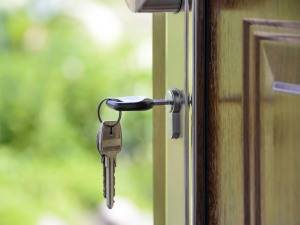Multifamily Blogs
Why investors should choose Mississippi multifamily housing
Why investors should choose Mississippi multifamily housing

Mississippi has been churning through a steady growth as other states have struggled to recover in recent years. In some places, jobs are evaporating, and workers are looking for new cities to call home. But the good news is still coming out of Mississippi, where a healthy economy continues to expand and diversify. Investors are taking a second look at this business-friendly state. For the multifamily housing sector, now is a great time to be in Mississippi.
Mississippi creates business-friendly environment
Investors should first look at the price of doing business in Mississippi. In the end, the numbers tell the story:
-
Low cost of doing business. The Magnolia State had the second lowest cost of doing business, according to a study by CNBC. Factors in that ranking include data like taxes, utilities, wages and real estate.
-
Low cost of living. Mississippi has the lowest cost of living in the country, according to the same study.
-
Favorable tax rates. The corporate income tax is 5 percent, the 12th lowest in the country. Also, Mississippi ranked No. 6 on the list of tax-friendly states last year by Kiplinger.
-
Low energy rates. Electricity in Mississippi costs less than in most states, according to the S. Energy Information Administration.
The state is known for shipbuilding, aerospace and timber, and growth is strong in manufacturing and technology. Mississippi is rich in resources, such as water, timber, oil and gas. Issues like earthquakes, drought and overpopulation are nonexistent. “Mississippi is the complete package,” said Jeff Rent, public relations manager for theMississippi Development Authority. “We have a very supportive governmental structure that is very pro-business. Not every state is like that.” What does that look like? Less red tape and more efficient government processes means business owners are up and running in less time.
“When companies come here,” Rent said, “they know they’re not going to be taxed to death. That’s a very favorable, pro-business environment.” That’s why positive development news is coming out of Mississippi all the time. Just this month, Continental Tire announced it will invest $1.5 billion in a new manufacturing plant, a project that will create 2,500 jobs.
Growth like that stirs demand in other sectors, such as multifamily housing. “There is going to be an immediate need for available housing at multiple levels, whether it’s multifamily or single family,” Rent said.
Hattiesburg relies on diversified economy for long-term growth
Hattiesburg is the regional hub of a nine-county trade area, which includes a population of nearly 300,000. People are drawn in by all the city has to offer: fun nightlife, area attractions, a robust arts community, historical districts and top schools.
Retail sales are $2.5 billion, the second highest in the state, even though the area is the fourth largest metro, said Todd Jackson, business development director for the Area Development Partnership.
Hattiesburg was ranked No. 24 for restaurant growth by Restaurant Business Magazine, and it has been a Top 50 city for five years in a row. “This vibrant college town is a place for booming retail and restaurant sales growth,” Jackson said. It’s truly the diverse economy that keeps Hattiesburg growing, Jackson said. Besides retail and restaurants, the medical, education and military sectors are robust.
-
Nearly 6,000 workers are employed by three major medical facilities in the Hattiesburg area. A whopping 100,000 patients come through those facilities each month.
-
About 27,000 college students attend the four colleges and universities in Hattiesburg: the University of Southern Mississippi, William Carey College, Antonelli College and Pearl River Community College. Those institutions employ more than 2,000 people.
-
Camp Shelby is the largest state-owned training facility in the country. More than 2,000 people work at the base, and 100,000 personnel are trained there each year.
The population of Hattiesburg is growing at a rate of 0.8 percent annually. That’s more than twice as fast as the Mississippi statewide rate of 0.39 percent, and it’s also faster than the national rate of 0.68 percent, according to the census.
The combination of a solid economy and steady growth create a strong demand for multifamily housing, whether it’s military families in transition or college students going to school. “It has to do with the diverse economy and the fact that this area was able to weather that storm better,” Jackson said. This region’s ability to weather economic lulls has resulted in more investors from outside our market turning to south Mississippi. A healthy, thriving economy, has multifamily investments becoming a place of stability for investor yields.

